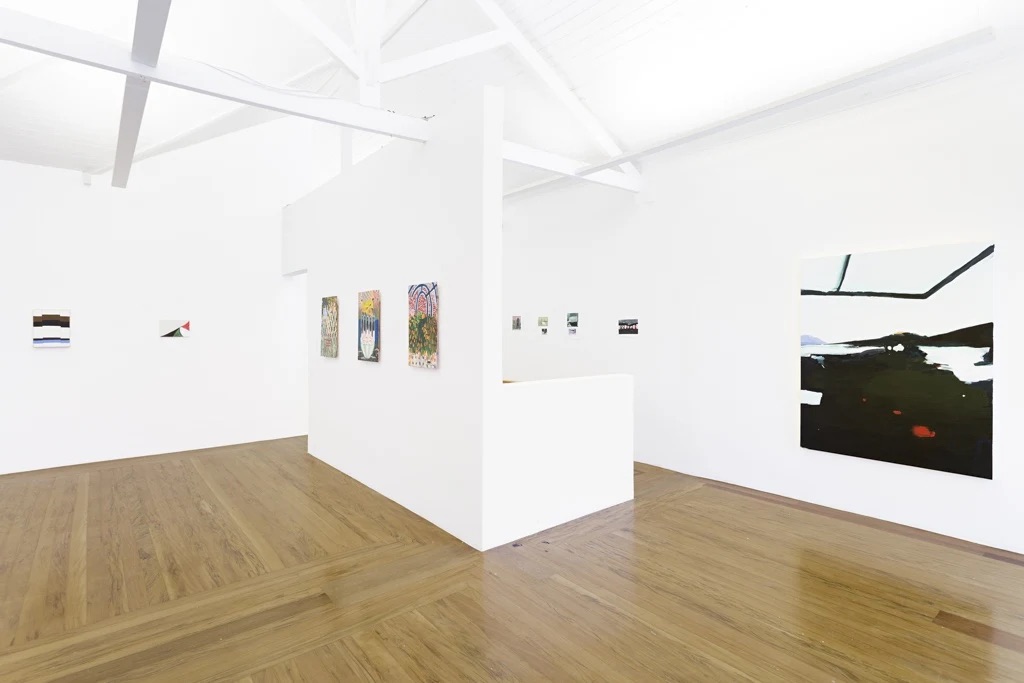Solo show at Kutlesa Gallery - Gouldal, Switzerland
Exhibiting period: Oct 27 - Dec 2, 2023
Kutlesa is pleased to present Aurora, an exhibition of new and recent paintings by Alexandre Wagner, on view at the gallery’s location. This is the São Paulo–based artist’s European solo debut.



















AURORA
Alexandre Wagner’s paintings share a common thematic catalyst: the creation of a space resembling a landscape. Brush strokes evoke an undulating motion that suggest horizon lines, cliffs, rivers, and forests, rendered in palettes of earth tones and vibrating, electrifying greens and blues. When viewing in series, one after another, the pictorial field develops a rhythm, repeating like a mantra, in which the figurative elements gradually disappear, and the true focus of the paintings emerges: color, movement, and light.
The result is a simple organization of the landscape: an almost abstract, archaic, primitive organization, without defined time and place - a space that, on the other hand, could encompass all times and places, void of any trace of human presence. Engulfed by a mist, a disorientation caused by the non-literality of the spaces, they retain the indefiniteness of a dream.
Reduced to this primary idea, the landscape serves as a motif for paintings that address, above all, issues related to the history of painting itself. Decidedly pictorial, these works materialize into images for a brief moment; upon subsequent viewings, these same images are overshadowed by the painting’s substance: material, technique, application, gesture. The vigorous brushstrokes, which almost sink into the canvas, remove more paint than they deposit on the surface, transforming into a continuous movement of scraping and excavation that contrasts with the delicate layers of highly diluted, almost liquid paint.
At the core of these works is the desire to remain on the threshold between abstraction and figuration, to inhabit an area where doubt is more important than certainty, a tension and experience perhaps only possible due to the paradoxes under which the paintings are constructed.
Group show at Auroras - São Paulo, Brasil
Exhibiting period: July 27 - Aug 13, 2022

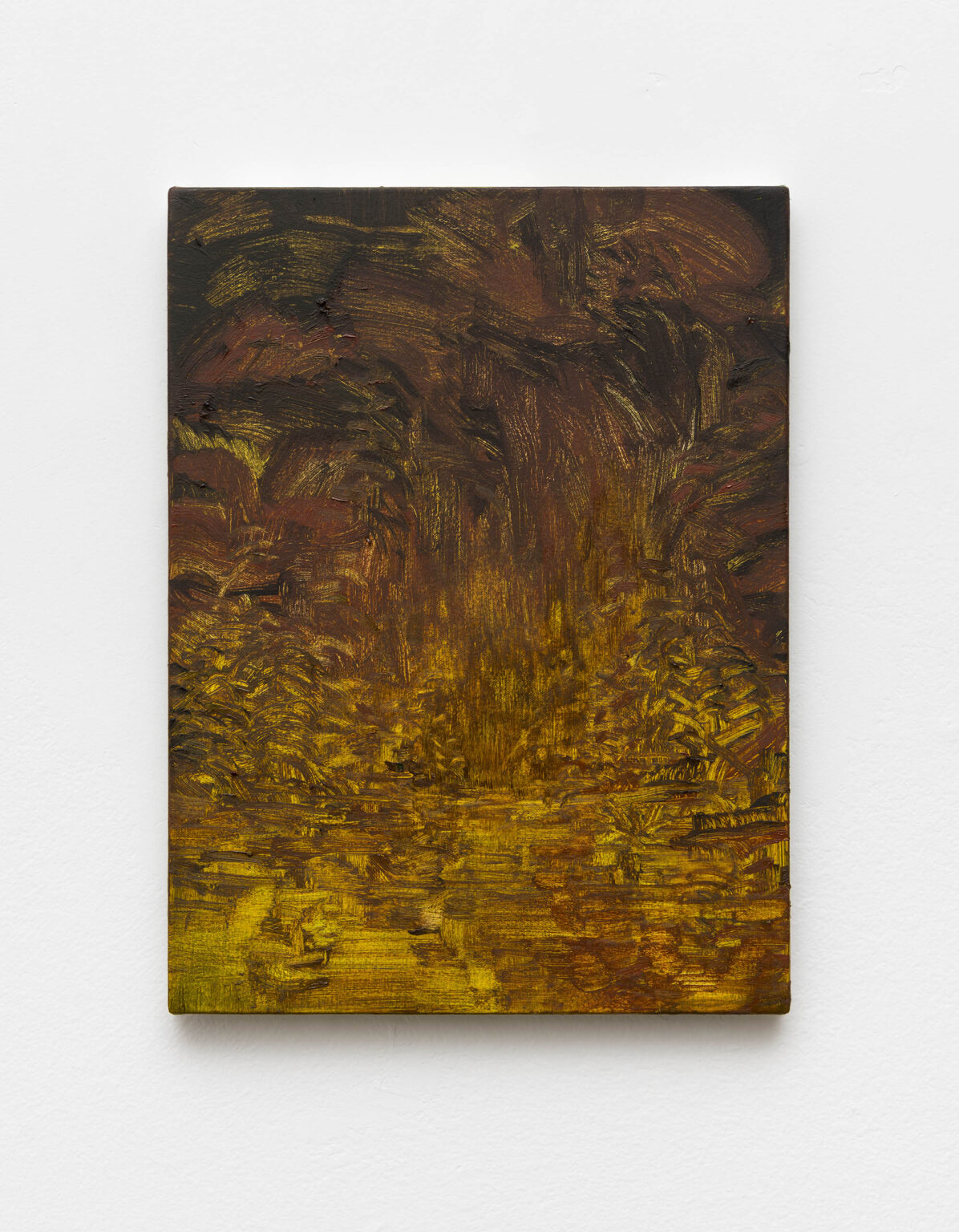








Fagulha
2022
Solo show at Gate Project - New York, USA
Exhibiting period: Jun 29 - Sep 30, 2022
Text by Tie Jojima








Undoing Landscapes
At first glance, the work of Brazilian artist Alexandre Wagner (b. 1986) presents the viewer with the familiar tropes of landscape paintings: a patch of dense vegetation on the margins of the composition, a riverbed, the rising moon, and an implied horizon. But the repetition of this classic syntax across his works compels us to take a closer look at the details of each piece. As we do so, we are invited to follow the small traces of paint scrupulously, yet precariously, applied to the canvas. The artist then engages with the landscape tradition only to undo its core attributes through the brevity of his gestures, the small scale of his works, and the construction of a space that shifts between indefinability and disorientation.
Landscape painting has a long history in Western art and a specific tradition linked to colonialism in the art of the Americas since the eighteenth century. Reflecting social concerns and epistemological shifts created by advances in technology, landscape is a canonical mode of conceiving of and representing nature, which played a central role in creating imaginaries for eighteenth- and nineteenth-century colonization and nation-building efforts in the Americas. In the twentieth century, ideas associated with landscape have negotiated interpretations of abstract art. In the twenty-first century, landscapes have been linked to our increasing concern with environmental degradation as well as the ubiquity of the digital world and its specific modes of visuality, which challenge our sense of place and space.[1] Alexandre Wagner counters this overdetermined tradition through the tenuousness of his gesture, by undoing representation, and by building layers of affect that may reach us as we read his traces.
Rather than planning his works through preparatory drawings and sketches, a practice common to painters, Wagner begins his paintings on the basis of a personal and emotional response to art history. They emerge from fragments of artworks belonging to a canon that might be called “global” art history: from Chinese ink painting to postimpressionism and early twentieth-century Latin American art. Choosing a small section of these sources as the starting point of his works, the artist slowly departs from the initial reference as his own work emerges. The source works are completely lost in the process as he organizes his paintings according to an inner logic of reflection, opposition, and the mirroring of each brushstroke. Wagner labors at the canvas in a process of doing and undoing, and then looking away and looking back at the work, adjusting it until he gets it right.
While the works selected for this exhibition evoke landscapes, they also invite the viewer to dwell on the surface of the canvas itself. Looking at each work as a whole—and taking it in at a single glance— the viewer might experience it in its totality as a landscape. However, the effect on the viewer shifts significantly as they observe the piece further. The shallow picture plane situates each work between a constructed space and an abstraction, calling attention to the details of the painterly marks applied onto the canvas itself. As we reorient our gazes from the painting as a whole to the details of its brushwork, we perceive numerous gestures, most of them small, repetitive, slow, and somewhat fragmented. For instance, a single brushstroke may be applied with different intensity at its beginning and end or may shift direction just slightly throughout its course, breaking away from its initial path.
Utilizing thin, diluted paint, which he applies layer upon layer to the canvas, the artist creates an effect of transparency. His brushstrokes sometimes result in the removal of paint from the canvas’s surface, allowing colors to emerge in this ambiguous process of addition and subtraction of painterly matter. The scale and orientation of his works are counterintuitive when we consider the logic of the large-scale, almost cinematic vistas that have defined the landscape tradition: Wagner’s works are relatively small and oriented vertically, thus paralleling the body of the viewer who faces them. The artist moves away from the immersive experiences of large-scale abstract works or landscape paintings, as well as the broad gestures that claim visual space while making bold statements about the artist’s self. Wagner instead inscribes his small and somewhat fragmented gestures on the canvas to avoid imposing a specific effect on the viewer, inviting them to explore its myriad details as they project their gaze over the work. From the interstices of a suggested representation and the details of the work emerges a landscape centered on the vulnerability of the artist’s gesture and its capacity to empty out space.
Alexandre Wagner’s work is rich with paradoxes. The thinness of the paint and hesitancy of the brushstrokes allow for transparency and even emptiness, despite his process being carefully considered and involving an accumulation of material. Likewise, his work creates space for personal, intimate encounters—both his encounter with the original piece and the viewer’s encounter with his paintings—while building on a tradition that is so historically dense that this intimacy is easily lost.
---
[1] For a survey of twenty-first-century landscape painting, see Barry Schwabsky, Landscape Painting Now: From Pop Abstraction to New Romanticism (New York: DAP, 2019).
---
Tie Jojima is a associate curator at Americas Society in New York and a PhD Candidate in Art History at the Graduate Center, CUNY, with specialization in modern and contemporary Latin American art. Her larger research interests encompass performance art, technology, and pornography in the 1970s and 1980s, as well as contemporary Asian diasporic art practices in Latin America.
---
Solo show at Galeria Marília Razuk - São Paulo, Brasil
Exhibiting period: May 27 to July 24, 2021
Text by Kiki Mazzucchelli
Photo credits: Artworks: Ana Pigosso - Exhibition: Filipe Berndt

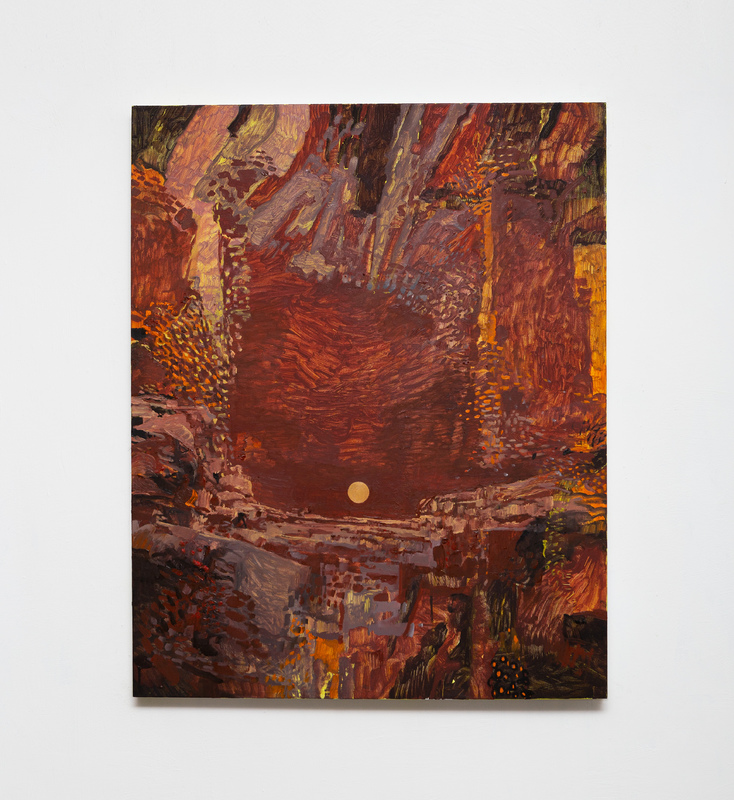

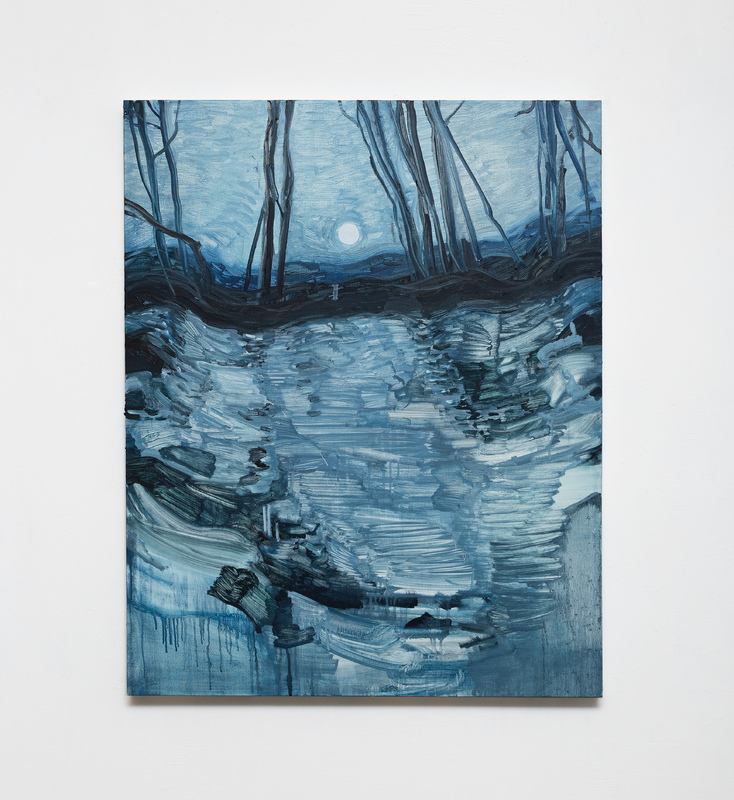



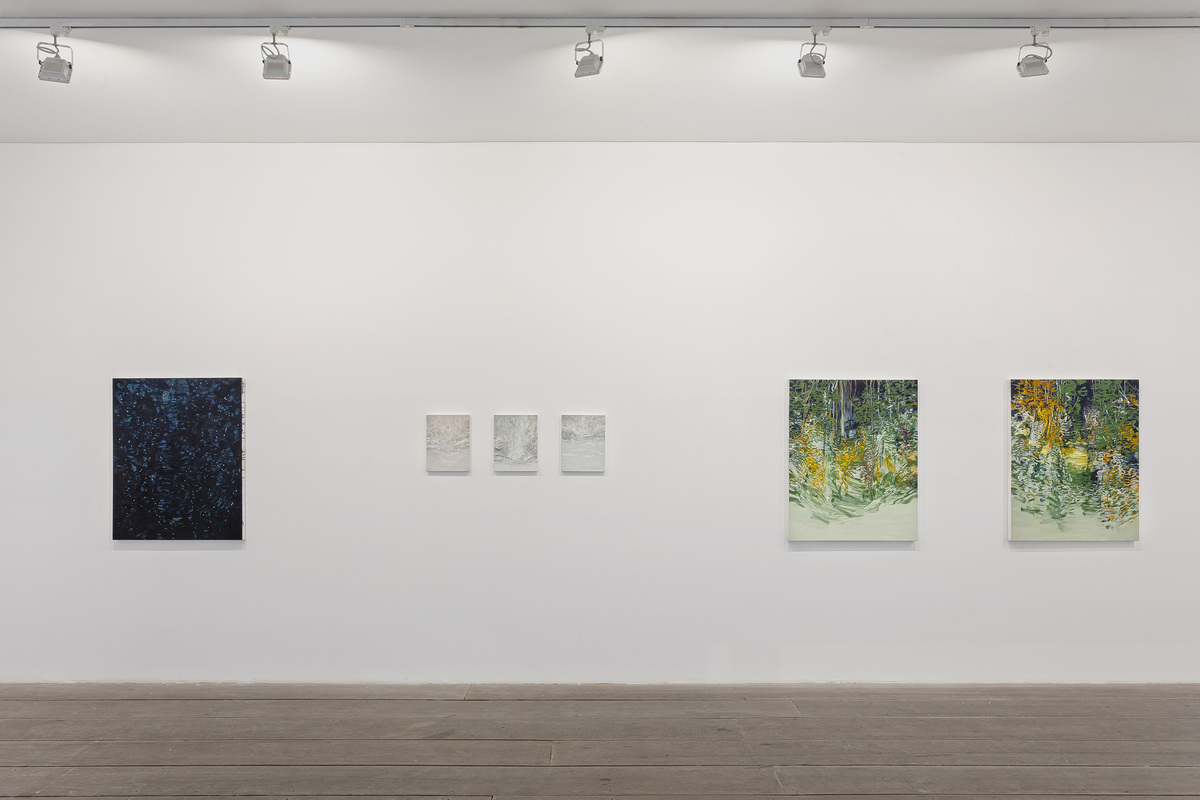







Studio Short for Água-Viva
ÁGUA VIVA
By Kiki Mazzucchelli
Água-viva, (jellyfish) Alexandre Wagner’s first exhibition at Galeria Marília Razuk, brings together a set of paintings that, at first, can be perceived as contemporary developments of one of the most recognized genres within the pictorial tradition: the landscape. Even though it is possible to identify a theme in the scenes of dirt roads, skylines and woodlands presented here, this more immediate take would set the work within the key of a certain atavistic romanticism, which, as I see it, takes the focus out of other aspects that seem to be more determining factors in the work.
The way the paint is diluted and applied, the different applications and intensities found in one single pictorial field, the chromatic palette which plays with the contrasts between light and shadow; all of this attests to the importance given by the artist to the actual creation of the painting, putting in the background a bigger commitment to illusionism or representation. In other words, the landscape works as a sort of theme for paintings that, above all, deal with problems related to painting itself. Decidedly pictorial (malerisch), the pieces coalesce in images even if only for an instant. The next moment, the color stands out, the translucency, the different textures: the very matter of a painting.
This constant oscillation is one of the most striking characteristics of Wagner’s work; something that may only be possible due to the scale of this works, which never reaches heroic proportions, limiting themselves to the small and medium-sized format and invariably — and even counter-intuitively — vertical. The disintegration of the image, coupled with the treatment given to a pictorial space of modest dimensions, conveys an idea of fragility to these paintings, situating them outside an historic facet of painting associated with a virtuous and incisive masculinity that does not allow for hesitation or doubt. Even in the different rhythms created by the expressive stroke — which could appear as signs of assertiveness —, a certain delicacy prevails which, at certain moments, reminds us of the vaporous landscapes of Guignard.
A recurring figure in many paintings in this show is the circle, which sometimes appears as the sun, sometimes as a moon on the horizon in works such as Miragem (Mirage, 2019) and Cachalote (Cachalot, 2019); other times as mysterious orange lanterns on the tree trunks of an enlarged landscape in Lanternas (Lanterns, 2019); and, also, on other
occasions, as shiny dots placed slightly to the center of the composition, causing a complete destabilization of the pictorial space. Such is the case for Assa-peixe (Cabobanthus polysphaerus, 2019), a painting in tones of orange and green traversed from top to bottom by a section of color compressed by volumes that stretch towards the center from the top of the canvas. The resulting image could be understood as the aerial view of a dirt trail sided by hills, except for the inclusion of a green circle a little below the center of painting (sun/moon), almost forcing us to notice what we see as the horizon, even if it is the horizon of an indefinite landscape.
This vertigo effect of “losing ground” also happens in paintings such as Cambará (2019), which could be the view from above to the center of a crater, a horizon, the reflection of a sun in a lagoon seen from above this same crater. Beyond any type of representation, the circle seems to function in these works as some kind of device that serves to anchor the compositions, in so much as it creates a focal point amidst the layers of watery strokes that suggest a matter in flow, in a movement towards the exterior of the painting. That is, these circles end up creating some kind of center in the midst of a movement of erosion of the image predominant in these paintings.
Much like jellyfish, the set of works presented in this exhibition seems to possess a changing morphology; they are paintings in which the landscape formulates the abyss of space and the abyss of image. They pull away, thus, from a long lineage of Western landscape paintings that distinguishes nature from culture, the latter trying to domesticate or placate the former. Alexandre Wagner’s work, on the contrary, seems to want to incorporate the living and in constant mutation of natural organisms, rejecting narrative in favor of the reality of the painting matter, at the same time without resorting to the spiritual or traditional justifications traditionally associated with the origins of the Western abstract painting. Much like jellyfish, these are invertebrate paintings.
Group show at Mendes Wood DM - São Paulo, Brasil
Exhibiting period: Feb 20 to Mar 26, 2016
Curated by Lucas Arruda and Bruno Dunley
https://mendeswooddm.com/exhibitions/145-eight-artists-group-show/

